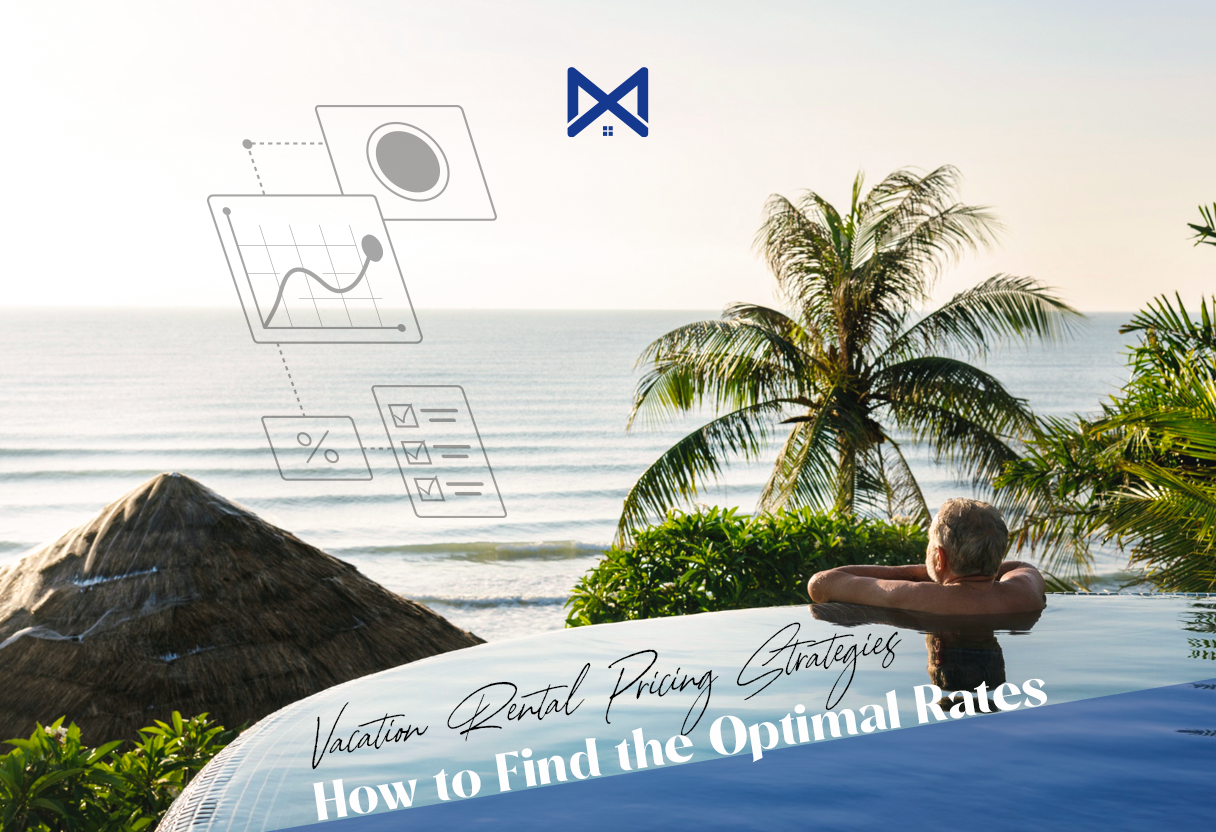Wed, Feb 5, 2025
Read in 6 minutes

Vacation Rental Pricing Strategies: How to Maximize Your Earnings and Stay Competitive
Pricing your vacation rental property correctly can be the difference between a fully booked calendar and an empty one. Whether you’re a seasoned host or just starting out, having a well-thought-out pricing strategy is crucial for attracting guests, increasing bookings, and maximizing your revenue. But how do you determine the right price? Let’s dive into the topic of vacation rental pricing strategies and explore how to do it effectively.
Why Do You Need a Vacation Rental Pricing Strategy?
A solid pricing strategy for your vacation rental is essential for staying competitive in the market while maximizing your rental income. Vacation rental prices fluctuate depending on demand, seasonality, and local events, and setting the right price at the right time can lead to increased bookings. A well-planned pricing strategy allows you to:
• Optimize Revenue: Setting competitive prices helps you make the most of high-demand periods while ensuring you aren’t overpricing during slower seasons.
• Attract More Guests: Guests are more likely to choose your property if your prices are perceived as fair, competitive, and aligned with market trends.
• Remain Flexible: A dynamic pricing strategy for your rental property management allows you to adjust prices based on factors like occupancy rates, upcoming events, and changes in the market.
In short, vacation rental pricing is more than just picking a number—it’s about maximizing profitability while keeping your property attractive to guests.
What Should You Consider Before Pricing Your Property?
Before you set a price for your vacation rental, there are several key factors to consider. These elements will help you tailor your pricing strategy for maximum success in the competitive world of rental property management:
1. Location
The location of your property plays a big role in its price. Properties in popular tourist destinations, near beaches, ski resorts, or major attractions tend to command higher prices. Research what similar properties in your area are charging to get a good baseline.
2. Seasonality
Vacation rental prices tend to fluctuate based on seasons. Peak seasons like holidays, summer, and major events will allow you to charge higher rates. Off-season months, however, may require discounts or promotions to attract guests.
3. Competitor Pricing
Take a close look at what other vacation rentals in your area are charging. Are your competitors offering additional perks? What amenities do they provide? By comparing your property with others, you can ensure you’re pricing competitively.
4. Property Size and Quality
Larger properties or those with premium features like hot tubs, pools, or modern amenities can command higher prices. If your property offers unique features, make sure to take them into account when determining your price.
5. Guest Demographics
Think about the type of guests you’re targeting. Families might prefer larger homes with more bedrooms and a full kitchen, while couples may opt for a cozy apartment. Understanding your audience will help you determine the right price point.
Your Unique Value Proposition
Your vacation rental has something special that sets it apart from the competition. Whether it’s the view, the location, or unique amenities like a home theater system, this unique value proposition (UVP) is a key element in your pricing strategy. Highlight what makes your property different and use it to justify your pricing.
If you offer additional services—such as personalized concierge services, airport pickups, or guided tours—your price can reflect that added value. For instance, if your property is near popular hiking trails, you could include a local guide, making your rental even more attractive to outdoor enthusiasts.
Make sure to clearly communicate these unique benefits in your listing, so potential guests can understand the value they’ll get by booking with you.
Ways to Build a Powerful Vacation Rental Pricing Strategy
Now that we’ve covered the key factors in pricing your property, let’s take a look at some effective ways to build a powerful vacation rental pricing strategy:
1. Dynamic Pricing
Dynamic pricing is all about adjusting your prices based on demand and market conditions. Platforms like Airbnb and VRBO allow you to adjust your rates for high-demand periods and offer discounts during low-demand times. You can also use specialized tools like PriceLabs or BeyondPricing to help automate dynamic pricing, ensuring that your vacation rental stays competitive and optimally priced.
2. Implement Minimum Stay Requirements
During busy periods, such as holidays or weekends, you can implement a minimum stay requirement. This ensures that your property is booked for longer stays, increasing your overall revenue while also reducing turnover costs. Just make sure to strike a balance, as setting a minimum stay that’s too high could turn away potential guests.
3. Offer Discounts for Extended Stays
Offering a discount for guests booking extended stays—like a week or a month—can encourage longer bookings and help increase occupancy. Guests are often willing to pay more per night if they receive a discount for staying longer, which can benefit you in the long run.
4. Monitor Occupancy Rates Regularly
Keeping an eye on your occupancy rates is crucial in rental property management. If you notice that your property is consistently booked well in advance, you may want to increase your prices for the upcoming months. Alternatively, if your property remains vacant, consider lowering your rates or offering special promotions to attract guests.
5. Track Local Events and Demand Trends
Certain events like festivals, concerts, or conferences can cause a surge in demand for vacation rentals in the area. Adjusting your pricing in anticipation of these events can help you take advantage of increased demand. It’s also important to monitor any external factors that could impact travel trends, such as new attractions or changes in travel restrictions.
6. Use Professional Photos and Compelling Descriptions
Even though this isn’t directly related to pricing, the quality of your listing can impact how much you can charge. Listings with high-quality photos and compelling descriptions attract more guests and can justify higher prices. Guests are often willing to pay more for a property that looks well-maintained and offers a great experience.
7. Monitor Reviews and Feedback
Pay attention to guest reviews and feedback. If guests are consistently impressed with your property’s quality and the value they received, you may be able to raise your prices. However, if feedback suggests that your property doesn’t meet guest expectations, you may need to lower your prices or make improvements before increasing them again.
In conclusion, developing a vacation rental pricing strategy is essential for running a successful business. By taking into account factors like location, competition, seasonality, and your property’s unique value, you can create a pricing strategy that maximizes your revenue while attracting the right guests. Whether you’re looking to manage your Airbnb property efficiently or overseeing multiple rental management properties, a strategic approach to pricing will ensure you stay competitive in the rental real estate management market. Always stay flexible, monitor trends, and adjust your pricing accordingly to achieve the best results.
